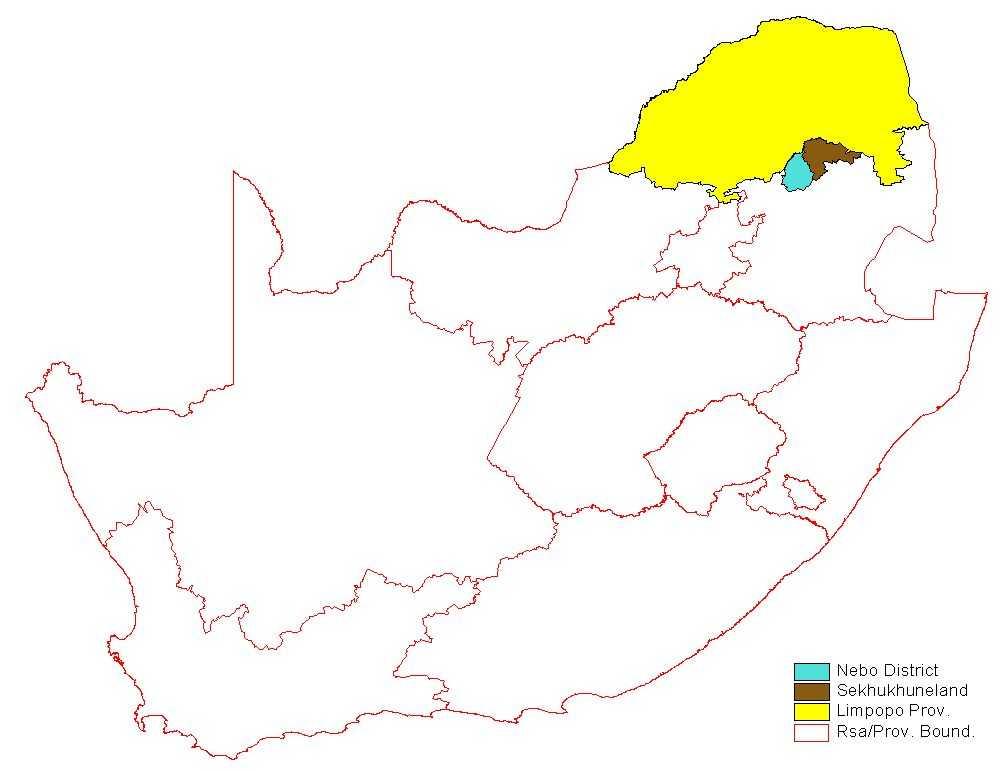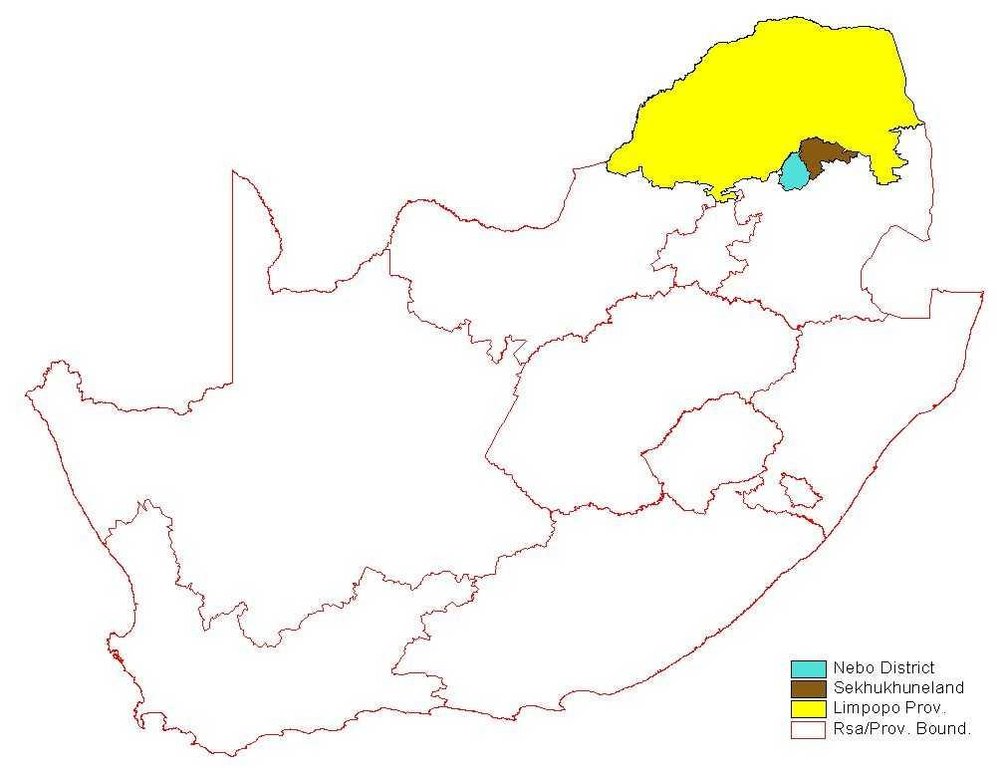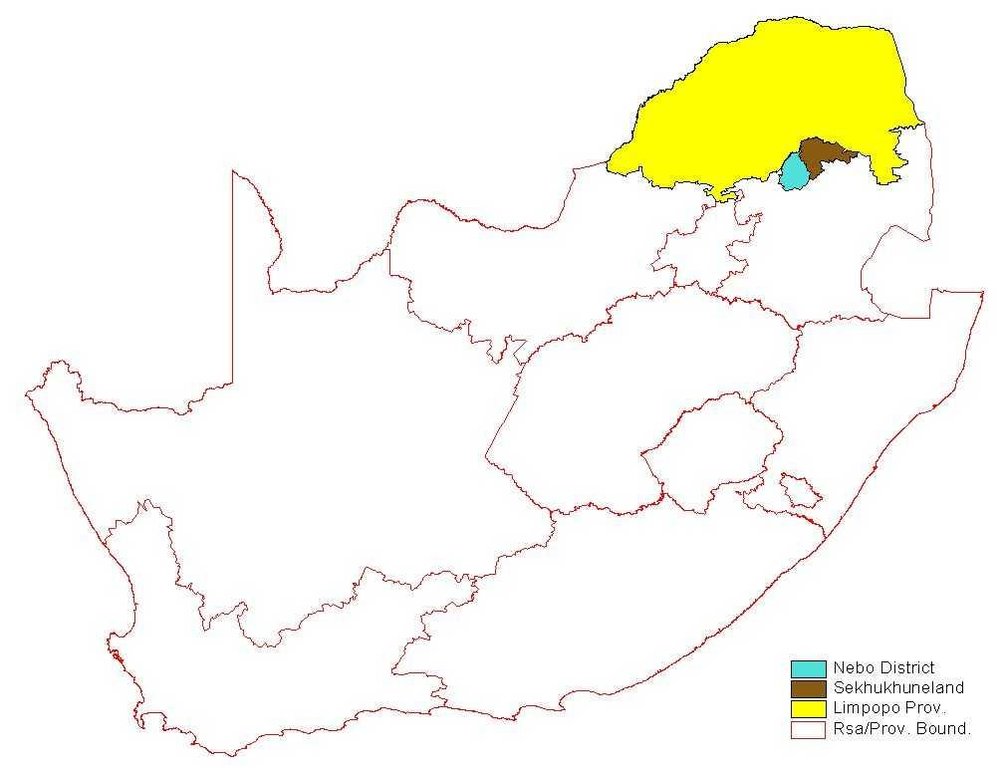Interactive community approach, biodiversity increase. [南非]
- 创建:
- 更新:
- 编制者: Igmé Wilhelm Terblanche
- 编辑者: –
- 审查者: Fabian Ottiger
approaches_2415 - 南非
查看章节
全部展开 全部收起1. 一般信息
1.2 参与方法评估和文件编制的资源人员和机构的联系方式
有助于对方法进行记录/评估的机构名称(如相关)
Action Green Heritage (Action Green Heritage) - 南非1.3 关于使用通过WOCAT记录的数据的条件
编制者和关键资源人员接受有关使用通过WOCAT记录数据的条件。:
是
1.4 SLM技术问卷的参考

Gully control (gabions) at Maandagshoek [南非]
Stone walls and re-vegetation (planting of indigenous trees) = Rehabilitation
- 编制者: Igmé Wilhelm Terblanche
2. SLM方法的描述
2.1 该方法的简要说明
Community involvement
2.2 该方法的详细说明
该方法的详细说明:
Aims / objectives: Community involvement in SWC and environmental conservation. SWC project for erosion control, reduction of siltation, water conservation, biodiversity increase, and environmental education. An interactive method in some cases combined the approach of the Department or Action Green Heritage, who worked through the tribal chief (traditional authority), the relevant government representatives (extension), and the Transitional Local Council (TLC - Government elected body e.g. municipality). The SWC projects are still in the on-going phase, having passed the implementation stage. The Nature reserves are also on going (the development phase has been finalised). The SWC programmes of NGO and government extension officer, environmental education officer and community are interlinked with the NGO for funding, the Government provides technical background and the TLC ensures broad involvement.
2.3 该方法的照片
2.5 采用该方法的国家/地区/地点
国家:
南非
区域/州/省:
Northern Province
Map
×2.6 该方法的开始和终止日期
注明开始年份:
1984
2.7 方法的类型
- 基于项目/方案
2.8 该方法的主要目的/目标
The Approach focused mainly on SLM with other activities (Nearby school involved environmental education for the school children, community, leaders (chiefs) and politicians involved)
Raising awareness, reduce silt soil loss. Nature reserve: financial gain for the community, protection of natural resources & increase biodiversity, awareness raising. Erosion projects: reduce siltation and soil loss and raising awareness. Natural Resource: Financial gain, protection of Natural Resources, an increase in biodiversity and raising awareness. To get community involvement in environmental issues
The SLM Approach addressed the following problems: Awareness, silt up of dams and rivers, land degradation (erosion) In nature reserves: land degradation, poverty, awareness, not sensitive enough for environmental problems. Erosion project: land degradation, siltation of dams/rivers. Nature Reserves: land degradation, poverty, awareness (lack of environmental knowledge)
2.9 推动或妨碍实施本办法所适用的技术的条件
社会/文化/宗教规范和价值观
- 阻碍
High population density - shortage of land - not always so easy to get land for building up nature reserve
Treatment through the SLM Approach: Awareness & project economic sustainable (that community can financially benefit)
财务资源和服务的可用性/可得性
- 阻碍
Not enough funding
Treatment through the SLM Approach: Keep on looking for funding & generate a bigger awareness of the problem & what could be done, also outside of government like Olifant river forum (some people are there involved with a lot of funding behind them)
法律框架(土地使用权、土地和水使用权)
- 启动
The existing land ownership, land use rights / water rights moderately helped the approach implementation: communal land if supported from tribal chief hinder: moderate: communal land if no ownership, a lot of people
其他
- 阻碍
Develop a project across a tribal border
Treatment through the SLM Approach: Environmental education
3. 相关利益相关者的参与和角色
3.1 该方法涉及的利益相关者及其职责
- 当地土地使用者/当地社区
Action Green Heritage. People living in the area
In tribal meetings mainly men, for work mainly women. Chief will not take any decision before the community agreed
- NGO
- 地方政府
Provincial government
- 国家政府(规划者、决策者)
3.2 当地土地使用者/当地社区参与该方法的不同阶段
| 当地土地使用者/当地社区的参与 | 指定参与人员并描述活动 | |
|---|---|---|
| 启动/动机 | 被动 | public meetings; Rapid/participatory rural appraisal is used today |
| 计划 | 被动 | rapid/participatory rural appraisal, public meetings |
| 实施 | 无 | |
| 监测/评估 | 被动 | public meetings, reporting; |
| Research | 无 |
3.4 有关SLM技术选择的决策
具体说明谁有权决定选择要实施的技术:
- 主要是SLM专家,咨询土地使用者之后
解释:
consultative.
Decisions on the method of implementing the SLM Technology were made by mainly by SLM specialists with consultation of land users. consultative.
4. 技术支持、能力建设和知识管理
4.1 能力建设/培训
是否为土地使用者/其他利益相关者提供培训?:
是
培训形式:
- 在职
涵盖的主题:
On the site for work, fencing, gabions, planting of trees
4.2 咨询服务
土地使用者有权使用咨询服务吗?:
是
说明/注释:
Name of method used for advisory service: LEP; Key elements: NGO was responsible for education for the people of Lebowa; 1) Advisory service was carried out through: non-governmental agency. Extension staff: Government & NGO 2) Target groups for extension: land users, politicians/decision makers; Activitie
Advisory service is quite adequate to ensure the continuation of land conservation activities; They have the staff
4.3 机构强化(组织发展)
是否通过这种方法建立或加强了机构?:
- 是,非常
具体说明机构的强化或建立程度:
- 本地
具体说明支持类型:
- 财务
- 能力建设/培训
- 设备
4.4 监测和评估
监测和评估是该方法的一部分吗?:
是
注释:
bio-physical aspects were ad hoc monitored through measurements
technical aspects were ad hoc monitored through observations
socio-cultural aspects were ad hoc monitored through observations
economic / production aspects were ad hoc monitored through measurements
area treated aspects were ad hoc monitored through measurements;
no. of land users involved aspects were ad hoc monitored through observations
management of Approach aspects were ad hoc monitored through observations
There were few changes in the Approach as a result of monitoring and evaluation: Involvement of the community in the project from the beginning to a great extent. Reduction of animal numbers.
5. 融资和外部物质支持
5.1 该方法中SLM组成部分的年度预算
如果不知道准确的年度预算,请给出一个范围:
- 100,000-1,000,000
注释(例如主要的资助来源/主要捐助者):
Approach costs were met by the following donors: government (national - Nature reserve): 80.0%; international non-government (-): 20.0%
5.2 为土地使用者提供财政/物质支援
土地使用者是否获得实施该技术的财政/物质支持?:
是
5.3 对特定投入的补贴(包括劳动力)
- 设备
| 具体说明哪些投入得到了补贴 | 程度如何 | 对补贴做出具体说明 |
|---|---|---|
| 机械 | 充分融资 | |
| 工具 | 充分融资 | |
如果土地使用者的劳动力是一项重要的投入,那么是不是:
- 以现金支付
5.4 信用
是否根据SLM活动的方法给予信用值?:
否
6. 影响分析和结论性陈述
6.1 方法的影响
该方法是否帮助土地使用者实施和维护SLM技术?:
- 否
- 是,很少
- 是,中等
- 是,支持力度很大
N/A
Did other land users / projects adopt the Approach?
- 否
- 是,很少
- 是,中等
- 是,支持力度很大
Personnel, some was transferred to other Departments and localities
6.3 方法活动的可持续性
土地使用者能否维持通过该方法实施的措施(无外部支持的情况下)?:
- 不确定
若否或不确定,请具体说明并予以注释:
In practice maybe because of the need of financial support for staff and management of game Soil conservation - without leading it is not possible
6.4 该方法的长处/优点
| 土地使用者眼中的长处/优势/机会 |
|---|
| financial |
| job opportunities |
| are part of the management |
| 编制者或其他关键资源人员认为的长处/优势/机会 |
|---|
| involvement of community |
| ownership of the land |
| little damage & high potential |
| get financial benefits - uplifting living-standard |
| sustainable jobs, protection |
| if transferred to community - can be financed from outside e.g. Development bank, this is only possible if fully transferred to the community |
6.5 该方法的弱点/缺点以及克服它们的方法
| 土地使用者认为的弱点/缺点/风险 | 如何克服它们? |
|---|---|
| would like to have more influence in the management |
| 编制者或其他关键资源人员认为的弱点/缺点/风险 | 如何克服它们? |
|---|---|
| Smaller reserves are overstaffed and poor management - transfer to the community and then employ a manager from outside (may be a solution). | |
| Nature reserves are still regarded as government nature reserves (financial and run). Only if community is to some extent involved in the management, people take ownership. |
7. 参考和链接
7.1 方法/信息来源
- 实地考察、实地调查
- 与土地使用者的访谈
链接和模块
全部展开 全部收起链接

Gully control (gabions) at Maandagshoek [南非]
Stone walls and re-vegetation (planting of indigenous trees) = Rehabilitation
- 编制者: Igmé Wilhelm Terblanche
模块
无模块





